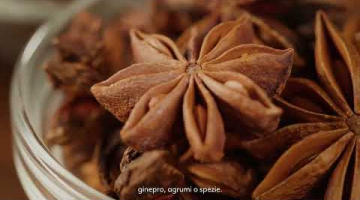In the world of whiskey, former Four Roses Master Distiller Jim Rutledge is a legend. He helped save the Four Roses Distillery from closing, brought their bourbon back to the U.S. after 50 years of export-only, and made their products among the more sought-after in the business.
It’s no surprise that he’s accomplished so much for the brand — he’s worked in almost every sector of the distilling industry. After starting in research and development at Seagram’s in November 1966, he was promoted or transferred many roles of through plant operations, bottling and warehouse management.
Eleven years later, he was transferred to Seagram’s corporate headquarters in New York. There, he worked as chief industrial engineer and was promoted the to planning and scheduling department. “Based on estimates, I did all the calculations of the amount of grain required, whether it be corn or rye or malted barley, the number of each type of barrel required,” he says. “On bourbon or any of the whiskies, I was working out 5-10 years, depending on the age of the whiskey.”
Despite the prestige of working at headquarters, Rutledge just wanted to get back to working in a distillery. In 1994, Rutledge got his chance, and went back to work at the Four Roses Distillery.
Jim Rutledge worked in nearly every sector of the spirits industry before bringing his vast and varied knowledge to Four Roses.
Four Roses Fluxes with the Industry
In many ways, the trajectory that Four Roses followed was very similar to what the industry as a whole experienced. Although their yellow label bourbon was the top selling bourbon in the U.S. in the 30s and 40s, Seagram’s pulled it off the shelves in the late 1950s. “In those days, the top shelf was dominated by blended whiskey, and that was primarily, in my opinion, due to the influence of Seagram’s,” he says.
The bourbon was replaced on shelves by a Four Roses blended whiskey. “It had nothing to do with us,” Rutledge says. “It wasn’t made in Kentucky, but it looked like a bourbon and it had a bad reputation.” And despite his repeated request for Seagram’s to replace the blended whiskey with their bourbon, he was told time and again, “Jim, you’re one person, and your opinion doesn’t make too much difference. Seagram’s is not willing to spend the millions of dollars it would take to rectify the mistake that our predecessors made 40 years plus ago.”
Through the 60s and 70s, the whiskey market was declining steadily. As a result, companies were setting aside less and less product every year. But in 1988, something shifted in Japan. “All of the sudden, the demand for bourbon shot through the roof,” says Rutledge. “It kind of caught the [companies] that were in Japan with our pants down.”
Bit by bit, the negative trends started to slow worldwide. By the 1990s, they were leveling out, and by the early 2000s, the whiskey industry was starting to see growth. Within the industry, computerization was beginning to affect quality. “The biggest difference is that we’re more consistently good,” he says. “Back in the 50s, 60s, we made some good bourbons, but we weren’t as consistent as we are today.”
As the demand for whiskey started to level out, Seagram’s went out of business. Kirin, the company that distributed Four Roses in Japan, bought the distillery and sent an envoy.
“I had the chance to ask a question, and I explained the blended whiskey with out name on the bottle and asked if they would take that off the market and bring our bourbon back over. Their immediate response was yes. I only found out about 3 years ago that they weren’t going to say no to anything I’d asked. I should’ve asked for more money,” he says with a laugh.
Rutledge credits the rise of social media for much of the bourbon boom. “They write about them on social media and blogs. There wasn’t that interest back in those early years. We had a job, and we did a job.”
After reintroducing the yellow label, he started a single barrel program that was followed a few years later by the limited edition small batch. The 2012 and 2013 releases were recognized as Whiskey Advocate’s American Whiskey of the Year, and the bottles began to fly off the shelves. This year, Rutledge was surprised to talk to people waiting in line who’d driven 500 miles to be there at 5 a.m. “It’s just unbelievable what people will do now to get some of the hottest brands.”
Earlier this year, Rutledge announced his retirement from Four Roses. Though he’d thought about retiring a few times in the past, he’d never felt the time was right. He’s not planning on slowing down. He’s already agreed to serve as the master distiller emeritus at Four Roses, but he doesn’t know how long that will last. “I hope to continue in some capacities and pick and choose when and where,” he says.
Now, with Four Roses stable and successful, it’s time. “We were here to stay, and all we can do is grow,” he says.
thanks to:https://talesofthecocktail.com/people/meet-man-who-saved-four-roses-bourbon
















